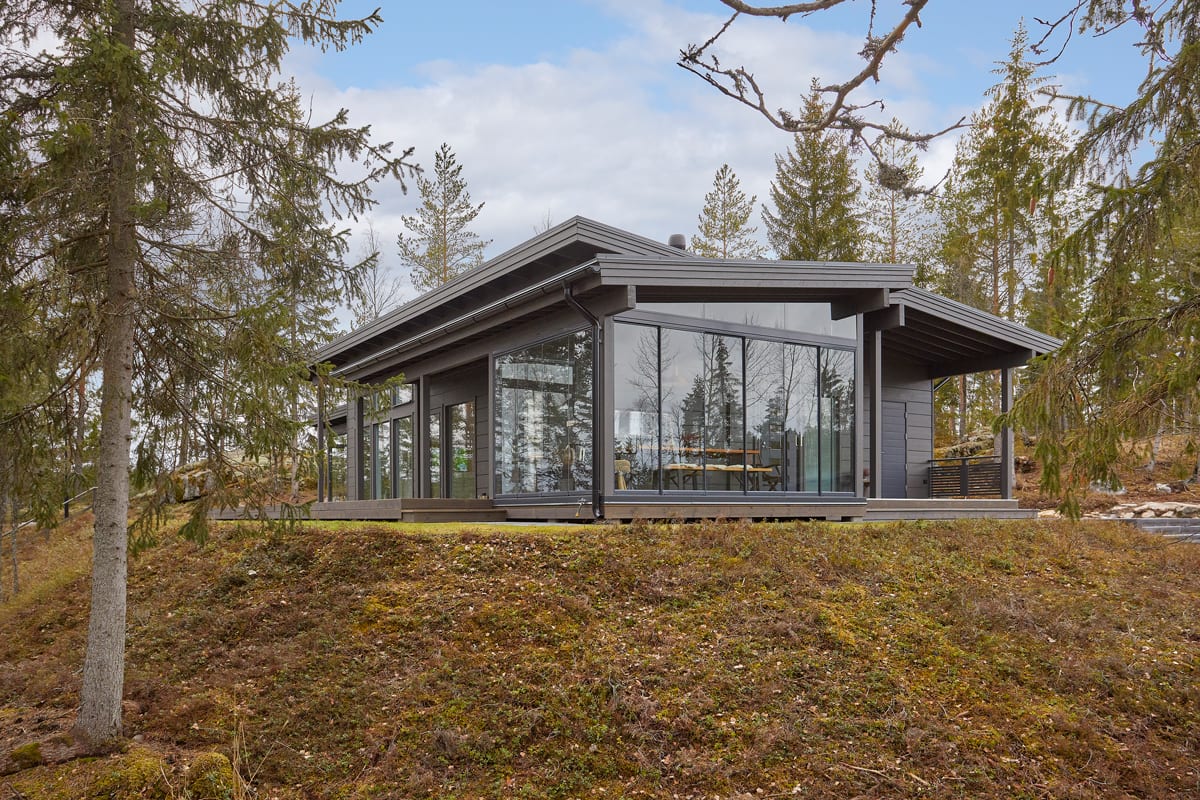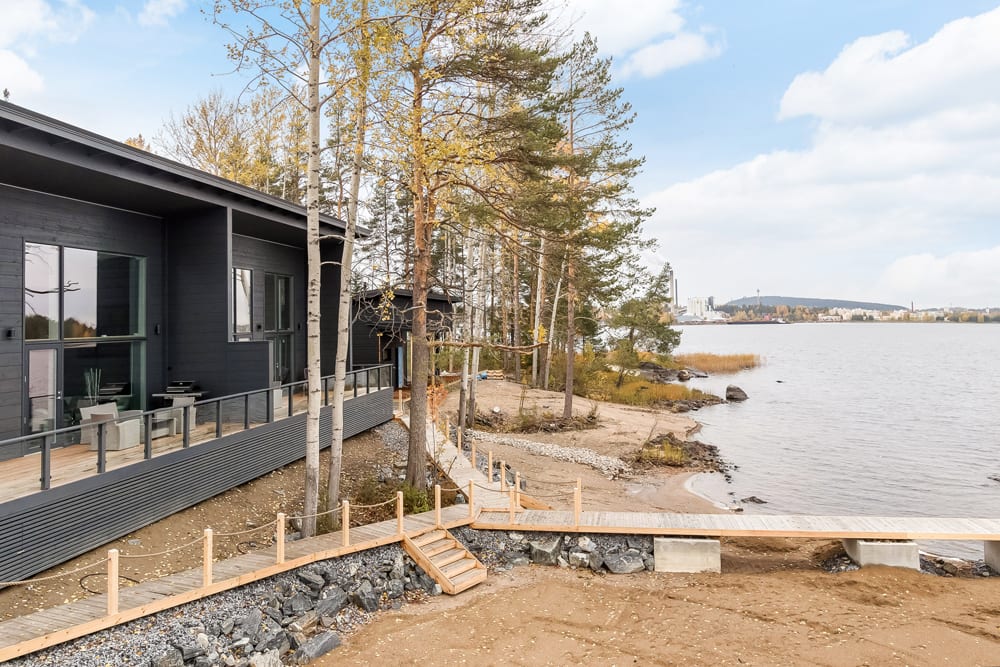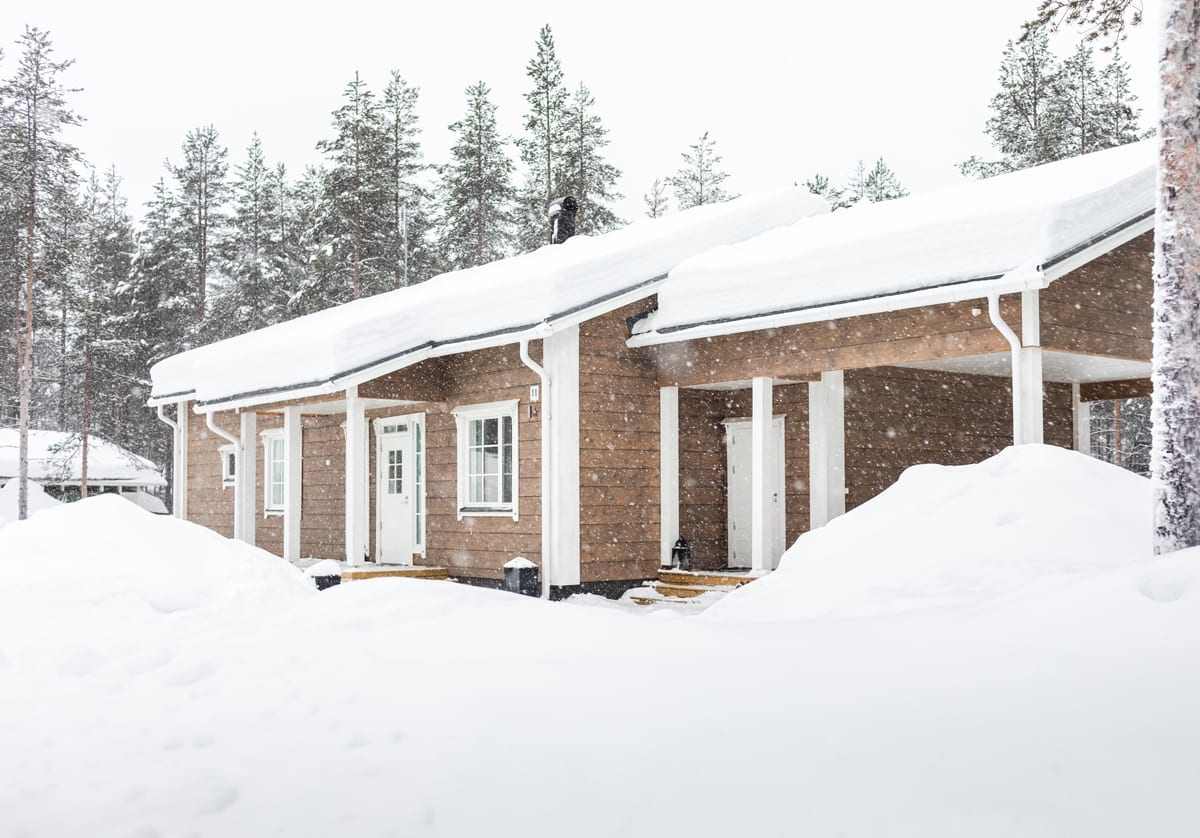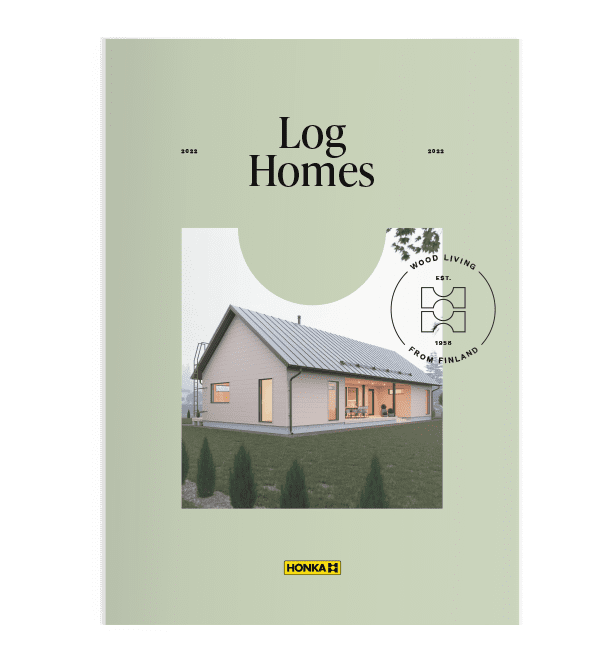It is worth spending time on colour choices for a log-house facade, as a harmonious home is a pleasure for the owner and blends beautifully into the landscape. Inspiration is now being sought from natural shades of grey and brown for the colour schemes of home exteriors.
In recent years, log-home builders have favoured dark and natural colours on exterior surfaces. We interviewed Irina Hanhisalo, a colour expert from Tikkurila Oyj, about the latest colour trends in log houses and asked her what to consider when choosing colours for facades.
 A log-home exterior is part of the landscape
A log-home exterior is part of the landscape
We’ve come a long way since the days of cherry-red log cabins. People now want their homes to blend in naturally with the landscape: the surrounding nature and nearby buildings. “You should start choosing a facade colour by taking a long look at the building’s surroundings,” Irina advises, adding that account should be taken of the building’s style as well as the landscape. “Whether the building is traditional or modern, and how its various surfaces interact.”
Many factors affect how well a log house’s tones blend in with their environment. When choosing tones, take account of the colours of nearby buildings, and the nature of the neighbouring vegetation and landscape. “Start by taking note of the landscape colours from different directions,” Hanhisalo says. “For example, a shoreline building looks quite different depending on whether you view it from the water against its backdrop of vegetation, or from the opposite direction. In a built environment, on the other hand, planning regulations often set a framework for the range of colours permitted for facades.”
You should start choosing a facade colour by taking a long look at the building’s surroundings.
Irina Hanhisalo, a colour expert from Tikkurila Oyj
 Inspiration from the colours of conifer trunks
Inspiration from the colours of conifer trunks
Dark shades are often chosen for modern log home exteriors. Builders are particularly interested in natural shades in addition to the popular black. “Softer, intermediate shades of light and grey-brown have become popular alongside black and grey,” Hanhisalo confirms.
A shade of dark grey or brown is a more relaxed choice than a black facade. While many dream of a pitch-black log home with sleek walls silhouetted against the skyline and forest, the outcome can be different to what they imagined. Resin, which can react strongly to the heat absorbed by black exteriors, is the problem on log-walls of this kind — it can penetrate and disfigure even the best surface treatment.
Hanhisalo urges those dreaming of dark facades to seek inspiration from the colours of nearby nature rather than traditional black. “Instead of black, look at the dark colours appearing naturally in the surroundings. Dark brown or grey can provide just as beautiful a finish. The dark shades on tree trunks are a good starting point. For example, the dark grey-brown of conifers is a timeless colour which blends a building seamlessly with the landscape,” she says.
Instead of black, look at the dark colours appearing naturally in the surroundings. For example, the dark grey-brown of conifers is a timeless colour which blends a building seamlessly with the landscape
Irina Hanhisalo, a colour expert from Tikkurila Oyj
 Exterior tones give a house a unique look
Exterior tones give a house a unique look
Colour choices for exterior surfaces affect the look of a house. When deciding between shades, it is worth considering what kind of style you want. “Fans of classic colour will choose a beautiful dark brown as the facade colour and combine it with traditional white window frames or eaves,” says Hanhisalo. “Gorgeous options from Tikkurila’s Valtti range of wood finishes include 5074 Karhu or 5077 Kanto.”
On the other hand, those who prefer modern and simple styles stick to narrow ranges of tones, choosing shades of grey and darker details for exterior surfaces. You can choose shades such as Tikkurila’s soft Turve 5088 or cooler 5154, which provide a simple and stylish finish when combined with darker surfaces. However, Hanhisalo reminds us that house colour schemes are changing, and newcomers are challenging popular shades. “We may be at the peak of the trend favouring dark tones, but trends tend to be followed by a counter-reaction.”
Irina Hanhisalo’s tips for successful surface treatment of exterior wall surfaces:
- Obtain all the tools, products and any scaffolding you need in advance.
- Carefully plan how you will proceed to ensure that the work goes smoothly.
- To achieve a uniform surface, reserve enough wood finish — such as tinted Valtti Akvacolor or Valtti Color — mixed in a single container to avoid variations in tone. This is particularly important when using translucent products, since colour differences stand out easily.
- Always treat an entire surface at a time. Since everyone has their own practices and style, one person should paint a single wall. Otherwise there can easily be tone differences and variations.
- Treat end surfaces and points where the wood ends with special care.
- Always use a tinted product to protect a new surface. Protect surfaces that should not be treated, such as glass and the environment with sufficient care, since wood finishing products are thin in composition and drip easily.
How to keep the natural tone of logs beautiful in the long term?
The natural colour of logs provides a beautiful backdrop for Scandinavian decor and many people do not want this valuable and unique material to be hidden by paint. Opt for earthy textiles alongside the log tone — timeless black provides an excellent contrast with log surfaces. In this post, you will find tips on maintaining the natural tone of wood.
FIND OUT MOREHow can we help you?
Share your log home dreams with the nearest Honka representative. We will help you to realise them.
Get in touch










